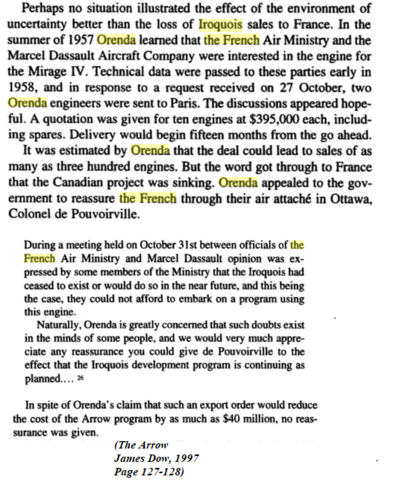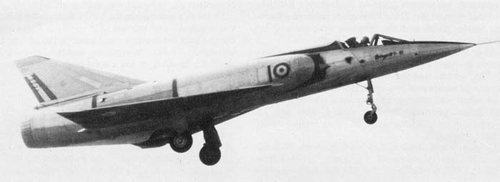Back in 2001-2002 I had an Avro Arrow madness period. This aircraft blew my mind, although at the time the enthusiasm of the youth turned me in a groupie rather than a leveled alt historian. Since then maturity had come and helped a lot.
Basically, the crux of the matter is this (self quoting from another thread I don't want to derail further)
So let's figure the above happens. Instead of wasting a helluva of money, time, and political credibility working on an impossible AMRAAM-in-the-50's wonder weapon system, they stick with the F-106 radar and Falcon missiles right from 1955.
To make good figure we could add two PODs (fasten your seatbelts !)
Guess who was Crawford Gordon mother ? a survivor from... the Titanic ! Had she drowned, no Crawford Gordon. He was a loudmouth and a divise figure that angered too many people.
Another POD I understand better now is possible sale of Iroquois engines to France. First for a "French F-105" - the Mirage IVC - in 1957-58, and the next year, for a "French B-58" the huge Mirage IVB.
While none of these birds will ever fly, fact is that SNECMA was hunting for advanced engine technology to get out of the Atar dead-end and monoculture. Their "Super Atar" had failed miserably.
A case could also be made that the Arrow with its delta-wing and analog FBW ( = Mirage 2000, except 20 years in advance, to the day - March 1958 / March 1978 !) would fit Dassault like a glove.
Basically, the crux of the matter is this (self quoting from another thread I don't want to derail further)
Had the RCAF been less stupid and not dropped the F-106 MX-1179 / MA-1 in 1955 to re-introduce it in September 1958, the Arrow might have survived for a simple reason. By the late 50's had started a trend that today had become dominant. That is, when building a combat aircraft, 70-80% of the development cost is the avionics / radar / weapons. Airframe and engines costs, in comparison, have shrunk to next to nothing. In the case of the Arrow, Orenda and Avro did some outstanding job on the engines and airframe. Alas, RCA Canada screwed the pooch with their ASTRA-1 system. Damn it, Sparrow II = AMRAAM in 1960. No way they achieved that. By 09/1958 with the writting on the wall they dropped the radar and missile for the F-106's, alas it was to late.
I always felt that, had the Arrow stick to the F-106 system, not only it would have saved a boatload of development costs, but the common radar and missiles... would have greatly helped in NORAD / SAGE integration beside the F-101, F-104, F-102 & F-106. what's more, that's EXACTLY what Canada did with the CF-100 MG-3 !
So let's figure the above happens. Instead of wasting a helluva of money, time, and political credibility working on an impossible AMRAAM-in-the-50's wonder weapon system, they stick with the F-106 radar and Falcon missiles right from 1955.
To make good figure we could add two PODs (fasten your seatbelts !)
Guess who was Crawford Gordon mother ? a survivor from... the Titanic ! Had she drowned, no Crawford Gordon. He was a loudmouth and a divise figure that angered too many people.
Another POD I understand better now is possible sale of Iroquois engines to France. First for a "French F-105" - the Mirage IVC - in 1957-58, and the next year, for a "French B-58" the huge Mirage IVB.
While none of these birds will ever fly, fact is that SNECMA was hunting for advanced engine technology to get out of the Atar dead-end and monoculture. Their "Super Atar" had failed miserably.
A case could also be made that the Arrow with its delta-wing and analog FBW ( = Mirage 2000, except 20 years in advance, to the day - March 1958 / March 1978 !) would fit Dassault like a glove.
Last edited:




